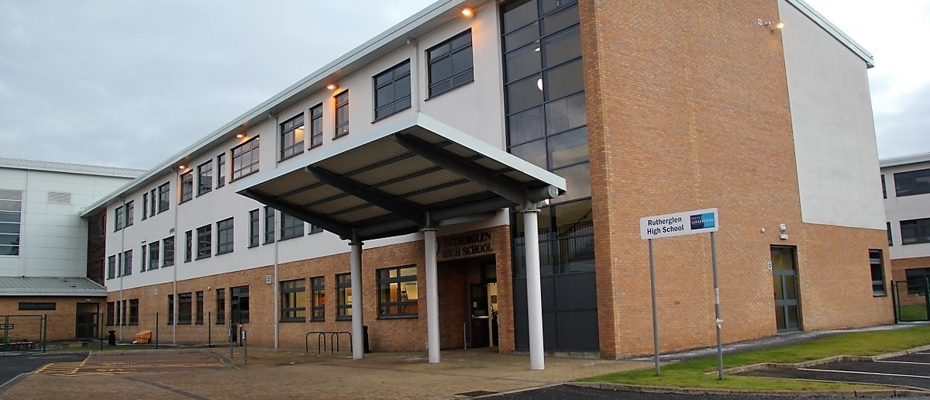

Welcome to the Art and Design Department.
Throughout S1-S3, Pupils follow a Broad General Education - In the Art and Design Department this means that pupils will have the opportunity to explore and experiment with a wide range of materials, techniques and creative tasks, which are frequently tailored to pupil’s individual interests.
At every opportunity pupils are given the chance to develop their creativity, critical thinking and problem solving skills. Pupils will also learn to use Art and Design as a platform for expressing and communicating their ideas, thoughts and emotions.
Through participating in a wide range of projects, pupils will learn about artists, designers and the wider world and will develop skills and knowledge which will assist them across their wider learning and within everyday life. Many projects also have a strong focus on developing skills and knowledge within Global Citizenship, Literacy, Numeracy and Health and Wellbeing.
Throughout S4-S6, pupils will work towards a range of qualifications, which are offered withing the Art and Design Department. The range of qualifications we offer are continuously reviewed
Ms L Robertson
National 1 Units
Creative Arts - Creating Materials for Display
Creative Arts - Creating Materials for Performance
Creative Arts – Working with Textiles
National 2 Units
Creative Arts - Creating Materials for Display
Creative Arts - Creating Materials for Performance
Creative Arts - Developing Skills in Creative Arts
National 3 Units
Art & Design - Expressive Activity
Art & Design - Design Activity
National 4 Units
Art & Design - Expressive Activity
Art & Design - Design Activity
S1 Curriculum
Throughout S1 Art and Design, pupils will be introduced to a wide range of materials and techniques and will begin to build skills and confidence in using these. Pupils will be introduced to the visual elements (line, pattern, texture, colour, shape, form and tone) and will begin to experiment with these within their work. Pupils will also learn about a wide range of Artists and Designers and they will learn how to communicate their thoughts, feelings and ideas about both their own work and the work of others.
Term 1 Core Projects – Pointillism Project, Jim Lambie ‘Pattern Walls’ Project, Kandinsky’s Circles Project
Term 2 Core Projects- Lobo Paint Mixing Project, Paul Klee ‘Park Near Lui’ Project
Term 3 Core Projects- Wayne Thiebaud Ice-cream Collage Project, Line Robots Project
S2 Curriculum
Throughout S2 Art and Design, pupils will focus on further refining their skills across a range of materials and techniques. Throughout each project pupils will begin to use and combine materials in a more skilled manner. Pupils will further develop their knowledge of the Visual Elements and should start to gain more of an understanding of how to apply this in their work. Pupils will continue to learn about a wide range of Artists and Designers and they will continue learning how to communicate their thoughts, feelings and ideas about both their own work and the work of others.
Term 1 Core Projects - Folder Nameplate Design, Hot and Cold Colour Project, Winter Crafts
Term 2 Core Projects – Paul Klee Colour Mixing Project
Term 3 Core Projects – Scottish Landscape Project
S3 Curriculum
Throughout S3 Art and Design, pupils will advance their skills in using a wide range of materials and techniques. Pupils will learn more about the qualities of different materials and will be encouraged to develop their creativity through making independent, informed choices about the materials and techniques they work with. Pupils will be introduced to the Design Process and will be encouraged to independently develop their own ideas and solutions to a design problem. Pupils will continue to learn about a wide range of Artists and Designers. As well as being able to communicate their thoughts, feelings and ideas about art and design pieces, pupils will also work towards identifying and describing some of the qualities of the visual elements within.
Term 1 Core Projects – Hundertwasser Cityscape Project
Term 2 Core Projects – Georgia O’Keefe Batik Project, Winter Crafts
Term 3 Core Projects – Mask Design Project
S4-S6 Curriculum
Throughout S4-S6, pupils will work towards gaining a range of SQA Qualifications – details of which can be found above.
The level and focus of these qualifications will vary depending on each pupil’s individual abilities and interests. All SQA units are delivered in a way which provides a high level of differentiation, which ensures that all senior pupils are completing qualifications which provide an appropriate level of challenge and progression.
























